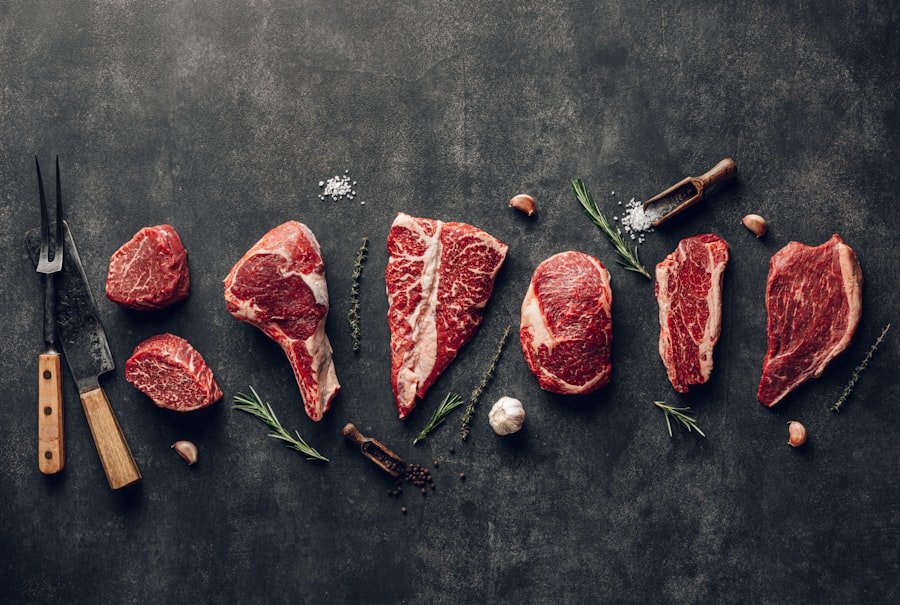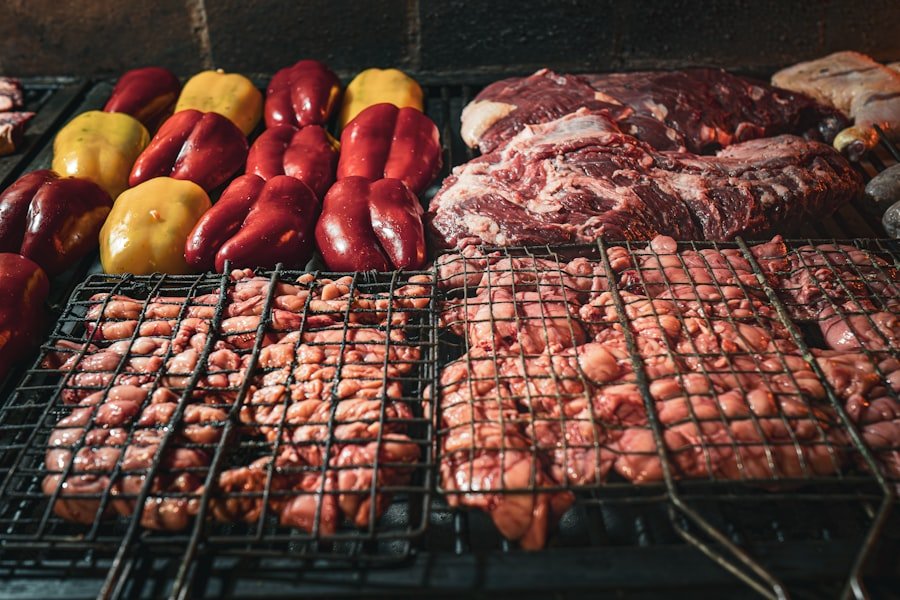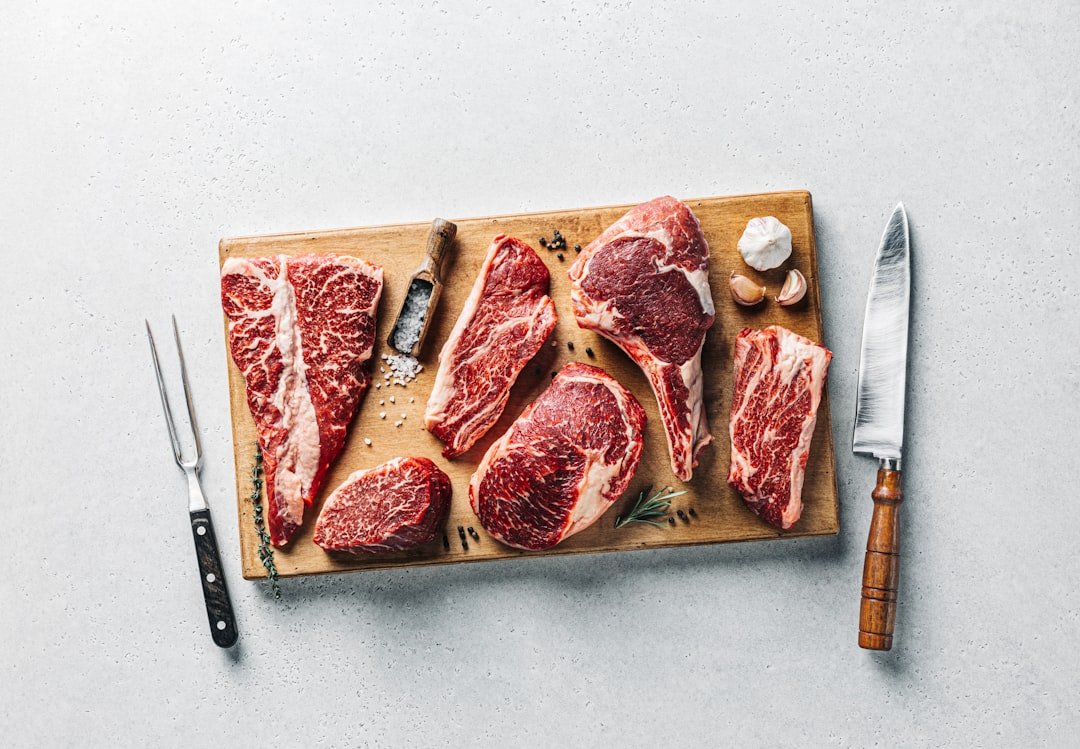Beef shank is a cut of meat that often flies under the radar in the culinary world, yet it possesses a unique charm and flavor profile that can elevate a variety of dishes. This cut comes from the leg of the cow, specifically the area around the shank bone, which is rich in connective tissue and muscle. The presence of collagen in beef shank makes it particularly well-suited for slow cooking methods, as it breaks down during the cooking process, resulting in tender, flavorful meat.
Traditionally, beef shank has been a staple in hearty stews and braises, where its robust flavor can shine through. The versatility of beef shank is one of its most appealing attributes. It can be used in a myriad of cuisines, from classic American pot roasts to Italian osso buco, where the shank is braised with vegetables and served with gremolata.
The marrow found within the bone adds an additional layer of richness to dishes, making it a sought-after ingredient for those who appreciate depth of flavor. As more home cooks seek to explore less conventional cuts of meat, beef shank is gaining recognition for its affordability and the culinary possibilities it presents.
Key Takeaways
- Beef shank is a flavorful and versatile cut of meat that is perfect for slow cooking and braising.
- The key ingredients for a beef shank recipe include beef shanks, aromatics like onions, carrots, and celery, and flavorful liquids like broth, wine, or tomatoes.
- To prepare and cook beef shank, start by browning the shanks, then sautéing the aromatics, adding the liquids, and simmering for several hours until the meat is tender.
- Tips for perfectly cooked beef shank include using low and slow cooking methods, adding enough liquid to keep the meat moist, and allowing the meat to rest before serving.
- Beef shank can be served with mashed potatoes, polenta, or crusty bread, and can also be used in soups, stews, and pasta dishes.
Ingredients for Beef Shank Recipe
Choosing the Right Beef Shank
When preparing a beef shank dish, the choice of ingredients plays a crucial role in developing the overall flavor profile. The primary ingredient, of course, is the beef shank itself. Depending on the recipe, you may choose to use either bone-in or boneless shank; however, bone-in is often preferred for its added flavor and richness.
Essential Aromatics and Vegetables
A typical recipe might call for two to three pounds of beef shank to serve a family or small gathering. In addition to the beef shank, a variety of aromatics and vegetables are essential for building a robust base. Common choices include onions, garlic, carrots, and celery, which form the classic mirepoix.
Enhancing Flavor with Herbs and Spices
Fresh herbs such as thyme, rosemary, and bay leaves can enhance the dish’s complexity. For added depth, consider incorporating tomatoes—either fresh or canned—as well as red wine or beef broth to deglaze the pan and create a rich sauce. Seasoning is equally important; salt and pepper are fundamental, but spices like paprika or cumin can introduce an exciting twist.
Preparation and Cooking Instructions

The preparation of beef shank requires some attention to detail to ensure that the final dish is both flavorful and tender. Begin by patting the beef shank dry with paper towels; this step is crucial for achieving a good sear. Season generously with salt and pepper on all sides.
In a heavy-bottomed pot or Dutch oven, heat a few tablespoons of oil over medium-high heat until shimmering. Carefully add the beef shank to the pot, allowing it to sear undisturbed for several minutes until a deep brown crust forms. This Maillard reaction is essential for developing flavor.
Once the beef shank is browned, remove it from the pot and set it aside. In the same pot, add chopped onions, carrots, and celery, sautéing them until they soften and begin to caramelize. This process typically takes about five to seven minutes.
Next, add minced garlic and cook for an additional minute until fragrant. Deglaze the pot with red wine or broth, scraping up any browned bits from the bottom—these bits are packed with flavor. Return the beef shank to the pot along with any additional ingredients such as tomatoes and herbs.
Cover with broth or water until the meat is submerged, then bring to a gentle simmer. Reduce the heat to low and cover the pot with a lid. Allow the beef shank to cook slowly for several hours—typically three to four hours—until it becomes fork-tender.
The low-and-slow cooking method allows the collagen in the meat to break down fully, resulting in a melt-in-your-mouth texture. If using a slow cooker or pressure cooker, adjust cooking times accordingly; a slow cooker may take six to eight hours on low heat, while a pressure cooker can yield tender results in about an hour.
Tips for Perfectly Cooked Beef Shank
| Tip | Description |
|---|---|
| Choose the right cut | Opt for beef shank with a good amount of marbling for flavor and tenderness. |
| Season well | Generously season the beef shank with salt and pepper before cooking. |
| Low and slow cooking | Cook the beef shank at a low temperature for a long time to break down the tough connective tissues. |
| Use moist heat | Braise or stew the beef shank with liquid to keep it moist and tender. |
| Rest before serving | Allow the beef shank to rest for a few minutes before slicing and serving to retain its juices. |
Achieving perfectly cooked beef shank requires attention to several key factors throughout the cooking process. One of the most important tips is to allow ample time for cooking; rushing this step can result in tough meat that hasn’t had enough time to break down properly. If you’re using a slow cooker or braising in the oven, consider starting early in the day so that you can enjoy a leisurely meal later on.
Another critical aspect is maintaining moisture during cooking. If you notice that your liquid level is getting low during braising, feel free to add more broth or water as needed. This will help keep the meat submerged and prevent it from drying out.
Additionally, consider using a tight-fitting lid or covering your pot with foil before placing it in the oven; this will trap steam and create a humid environment that promotes tenderness. Monitoring temperature is also essential when cooking beef shank. While low temperatures are ideal for breaking down tough fibers, be cautious not to let it simmer too vigorously; this can lead to overcooking on the outside while leaving the inside underdone.
A gentle simmer allows for even cooking throughout the cut. Finally, let your dish rest after cooking; this allows juices to redistribute within the meat, enhancing flavor and moisture when it’s time to serve.
Serving Suggestions for Beef Shank
When it comes time to serve your beautifully cooked beef shank, there are numerous options for presentation and pairing that can enhance your dining experience. One classic approach is to serve it over a bed of creamy mashed potatoes or polenta, which can soak up the rich sauce created during cooking. The contrast between the tender meat and smooth starch creates a comforting dish that is sure to please.
For those looking for lighter options, consider serving beef shank alongside roasted or sautéed seasonal vegetables such as green beans or Brussels sprouts. A fresh salad with a tangy vinaigrette can also provide a refreshing counterpoint to the richness of the meat. If you want to incorporate grains into your meal, try serving it with farro or quinoa; these nutty grains complement the flavors of beef shank beautifully.
Presentation can elevate your dish further; consider garnishing with freshly chopped herbs like parsley or chives for a pop of color and freshness. If you’ve made a sauce from the braising liquid, drizzle it over the meat just before serving for an added touch of elegance. For an Italian twist, serve with crusty bread on the side for dipping into any remaining sauce—a delightful way to enjoy every last bit of flavor.
Variations and Substitutions for Beef Shank Recipe

Exploring Alternatives to Traditional Beef Shank Recipes
Traditional beef shank recipes are renowned for their rich flavors, but there are numerous variations and substitutions that can cater to different tastes and dietary preferences. For those looking for a lighter option or wanting to experiment with different proteins, lamb shanks can be used as a substitute for beef. Lamb offers a distinct flavor profile that pairs wonderfully with similar seasonings and cooking methods.
Vegetarian and Plant-Based Adaptations
Vegetarian adaptations can be made by substituting beef shank with hearty vegetables such as portobello mushrooms or eggplant. These ingredients can be braised in vegetable broth with similar aromatics to create a satisfying dish that captures some of the essence of traditional beef shank recipes without using meat. Additionally, legumes like lentils or chickpeas can be added for protein while maintaining a plant-based focus.
Infusing International Flavors into Your Dish
For those who enjoy international flavors, consider infusing your dish with spices from different cuisines. For example, adding cumin and coriander can give your beef shank an Indian flair, while soy sauce and ginger can transform it into an Asian-inspired dish. Experimenting with different herbs and spices allows you to tailor your recipe according to your palate while still enjoying the tender texture that slow-cooked shank provides.
Health Benefits of Beef Shank
Beef shank not only offers culinary delights but also comes with several health benefits when consumed as part of a balanced diet. One significant advantage is its high protein content; protein is essential for muscle repair and growth, making it an excellent choice for those engaged in physical activity or looking to maintain muscle mass as they age. A typical serving of beef shank provides around 25 grams of protein per 3-ounce portion.
Additionally, beef shank contains important vitamins and minerals that contribute to overall health. It is rich in iron, which plays a crucial role in oxygen transport within the body and helps prevent anemia—a common concern among individuals who do not consume enough iron-rich foods. Zinc is another mineral found in abundance in beef shank; it supports immune function and aids in wound healing.
The collagen present in beef shank also offers potential benefits beyond just flavor; collagen is known for its role in promoting healthy skin, joints, and connective tissues. As collagen breaks down during cooking, it releases amino acids that may support joint health and improve skin elasticity when consumed regularly as part of a varied diet.
Conclusion and Final Thoughts on Beef Shank Recipe
Beef shank stands out as an underappreciated cut of meat that deserves recognition for its rich flavor and versatility in various culinary applications. With its ability to transform into tender morsels through slow cooking methods, it offers home cooks an opportunity to create hearty meals that evoke comfort and satisfaction. The ingredients used in preparing beef shank can be tailored according to personal preferences or dietary needs while still delivering delicious results.
As you explore different recipes and techniques for cooking beef shank, remember that patience is key; allowing time for flavors to meld and meat to tenderize will yield rewarding outcomes that impress family and friends alike. Whether served over creamy polenta or alongside vibrant vegetables, beef shank has something special to offer at any dining table. Incorporating variations into your cooking can further enhance your experience with this cut of meat—experimenting with spices from around the world or adapting recipes for vegetarian options opens up new avenues for creativity in the kitchen.
With its health benefits and culinary potential, beef shank is not just a meal; it’s an invitation to explore flavors while nourishing both body and soul.
